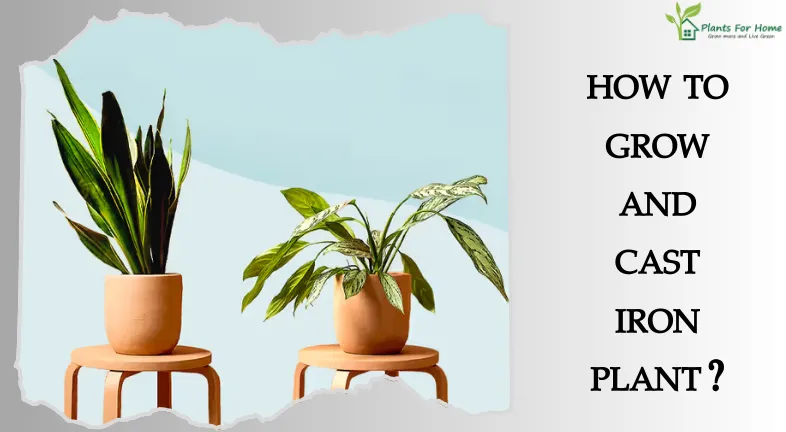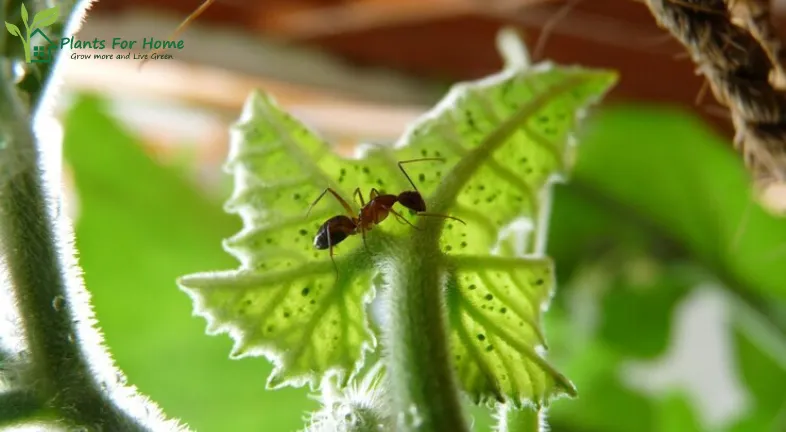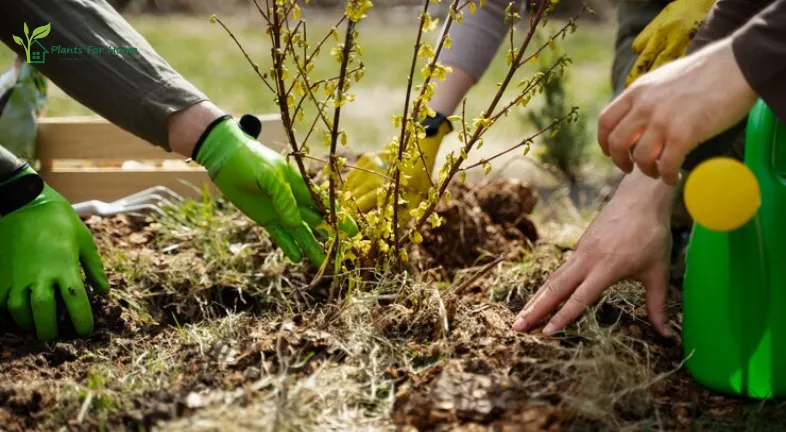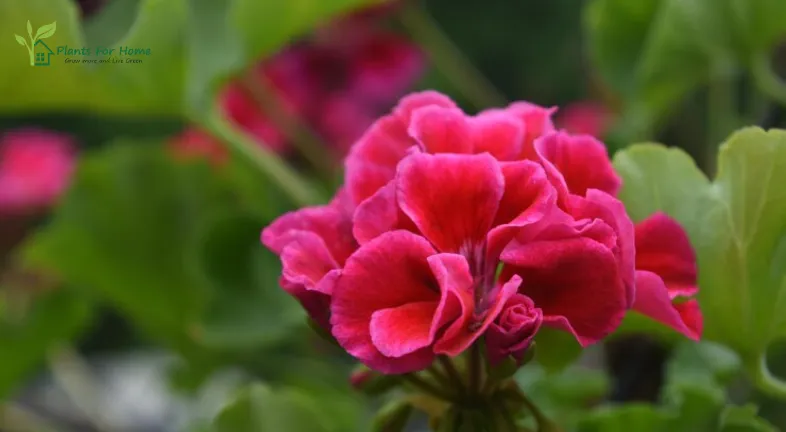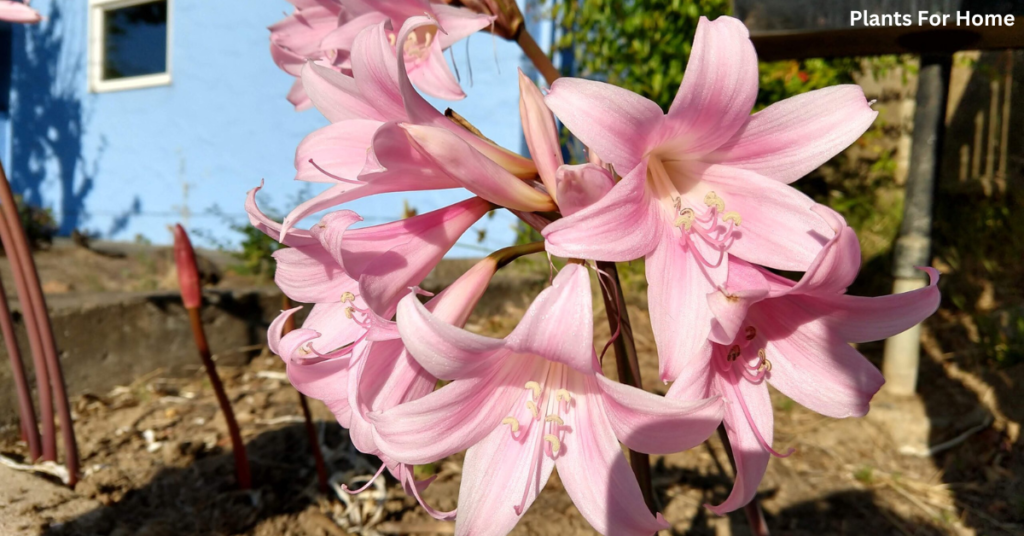
Amaryllis belladonna, commonly referred to as Naked Ladies, is a bulbous perennial lily. They are indigenous to South Africa and members of the Amaryllidaceae family. Early to bloom, belladonna lilies start to blossom in late summer and continue into autumn. Up to six trumpet-shaped flowers may open on a single stem. The name “Naked Lady” comes from the flowers that are grown on a leafless or bare stalk. The blossoms, which are carried aloft on a purple or green stem, come in various colors of pink and white. Belladonna lilies bloom most effectively when they are grown from clumps that have been neglected for a number of years. The foliage will emerge in the fall and remain until winter, when it will hibernate until spring. The foliage has a dark green color and is strappy and thin. Belladonna lilies prefer warm climates, so locate them in a full-sun area of the garden.
Belladonna lilies are low-maintenance bulbs that are simple to grow. They are perfect for the middle or
back of a border and look fantastic in rock gardens. If the bulbs are allowed to naturally occur in the
garden, they will grow and cluster together. Belladonna lilies can withstand droughts.
Belladonna Lily Plant Maintenance:
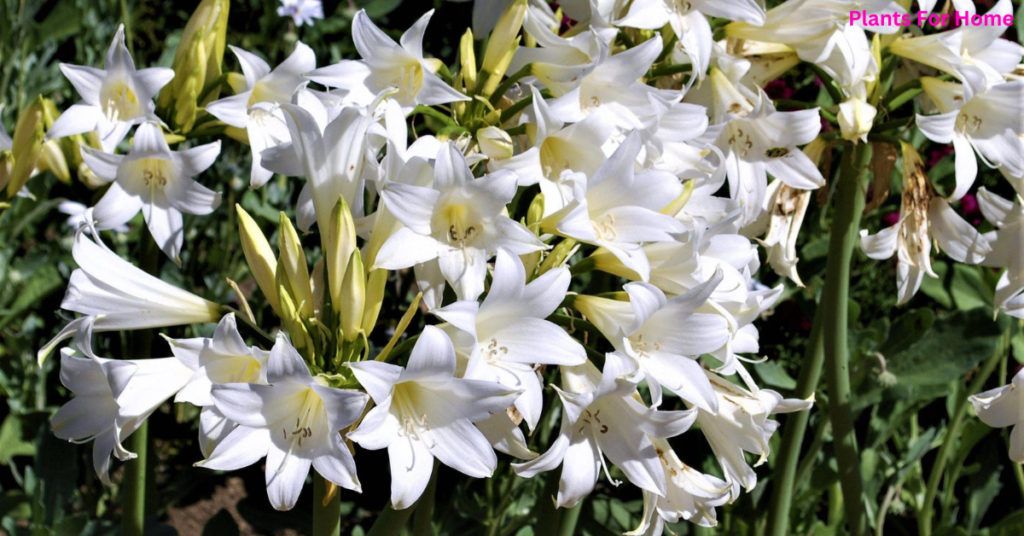
- Water frequently when the plant is in bloom. After the leaves have fallen, stop watering.
- When leaves start to develop after flowering, apply full plant food.
- After flowering has finished, trim back the flower stalks. When the bulb goes dormant, remove any dead foliage.
- While in dormancy, bulbs can be plucked and divided, but clumps that have been left untouched for a few years produce the greatest flowers.
- able to withstand most pests. Be cautious with slugs and snails.
Belladonna Lily Plants Should Be Planted in the Spring or Summer.
Preparing the Soil
Although they may thrive in most types of soil, they prefer well-drained soil. Dig in organic stuff that has decomposed if your soil is poor.
Planting Belladonna Lily plants should be planted in full light, 20 to 40 cm apart, with the bulb’s tip above the earth. A little more is preferable than none since they like the portion of the bulb above ground.
When utilizing a pot or container, keep in mind that bulbs can get rather big; a single bulb requires a 20cm pot.
Zones of Climate
appropriate for every climate. capable of withstanding -5°C temperatures.
Plant Dimensions
Width: 20–40 cm, Height: 60 cm
Are potted belladonna lilies possible to grow?
It looks great growing in pots on the patio or in the middle of a warm, sunny border in milder regions. Garden maintenance: In the spring or late summer, plant bulbs just below the surface. Water often and fertilize monthly with a balanced liquid fertilizer during the growing season.
How to Take Care of Peace Lilies?
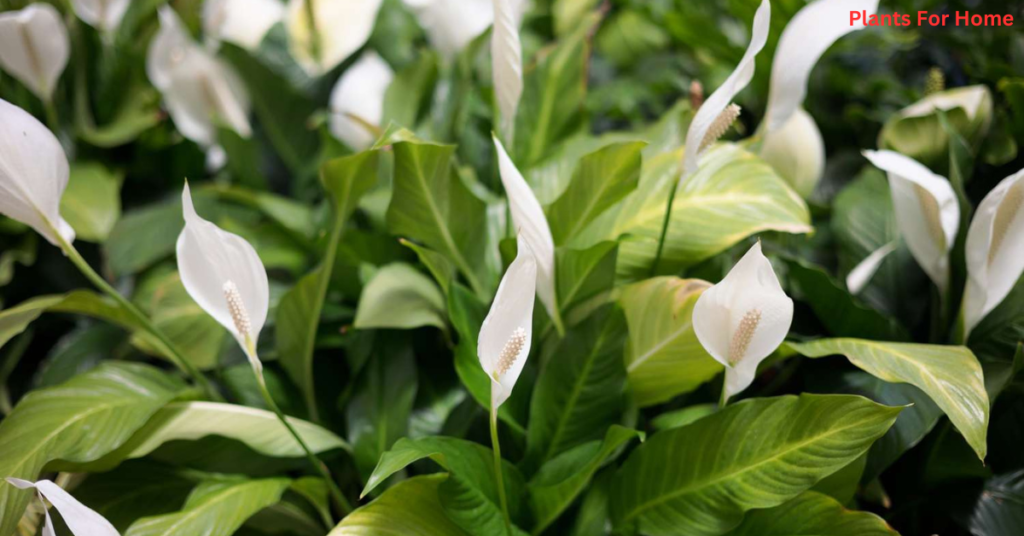
Peace lilies require less maintenance than other indoor flowering plants, such as orchids. For those who are new to flowering plants, peace lilies can be a fantastic introduction, despite their special care requirements. Maintaining a low light level and being proactive when it comes to watering your peace lily are essential components of good care.
Fertilization:
In order for your peace lily to produce its characteristic white blossoms, fertilization is necessary. During the summer blooming season, treat your plant once a week with a general fertilizer. For those who would rather cross something off their list of daily tasks, you may also fertilize your plant once with slow-release pellets. Your peace lily doesn’t require fertilization in the winter.
Lighting:
Peace lilies don’t grow well in low light or strong sunshine, just like a lot of other typical houseplants. Placing your peace lily in a spot that receives bright, indirect sunshine all day long is ideal. Direct sunshine may cause the plant’s green foliage to turn brown and soil to dry up.
Your peace lily will thrive best if it is placed next to an east-facing window. As a result, it will only receive direct sunlight in the morning, when the light is mild and tolerable. For the remainder of the day, the plant will receive filtered light from this position. Another great place for your peace lily is a window that faces north.
Soil:
The peace lily is a tropical plant native to Asia and Central America, despite its unlikely appearance. On the floors of rainforests, where the soil is rich in organic matter from rotting plants and animals, peace lilies flourish. To replicate this climate, use a potting mix that drains well and is fortified with nutrients and organic matter.
Growers cultivate beladonna lilies for their brilliant, funnel-shaped blooms, which open in late summer and early fall. The fragrant pink, red, and white blooms are produced in umbels of six to twelve on fleshy, leafless stalks.
Potting soil that holds water does not work well for peace lilies. Tropical plants may die from root rot, a common fungal disease that can result from leaving your plant in wet, humid soil. Until you can completely repot your peace lily, you might want to move it to a pot with drainage holes if the soil in which it is planted exhibits poor draining. Growing tips for Amaryllis (genus) belladonna lilies (common name). Also referred to as the “bare lady” due to the appearance of leafless, bare flower stems.
Although most of these flowering bulbous plants are planted outside, there are certain bulb type species that may grow and flower indoors given the right conditions.
The common names for Amaryllis belladonna are “naked lady” or “Belladonna lily” The only species in the Amaryllis genus is Amaryllis belladonna. Hippeastrum is the genus of lilies that are sold for winter forcing and are also referred to as florist’s amaryllis.
CONCLUSION:
The Beladonna lily is an evergreen. Flowers on solitary, arched stalks are produced by beladonna lilies. Late fall or early spring brings the appearance of strap-shaped leaves, which wither and die back in early summer, revealing blooms on bare stalks.
“Naked Lady” is the second popular name for Amaryllis belladonna, referring to the vibrant flowers perched on leafless stalks.


